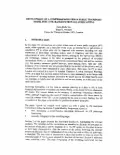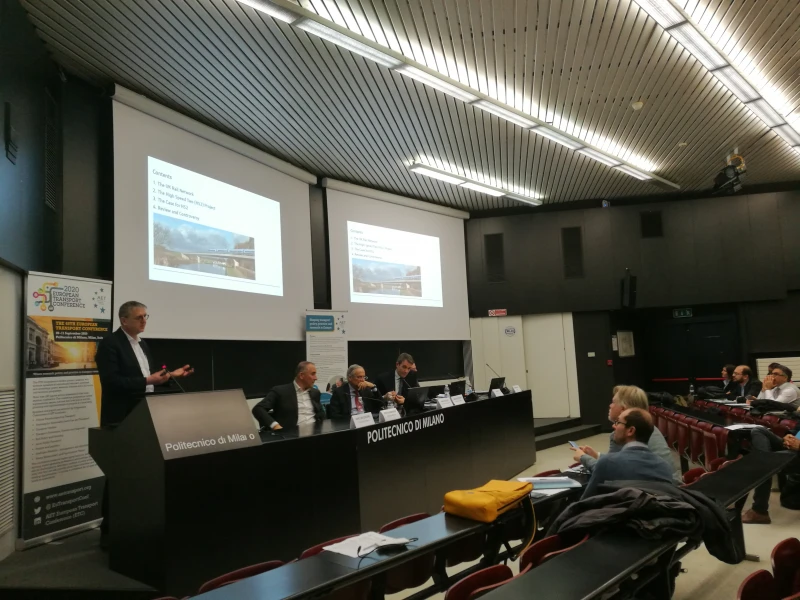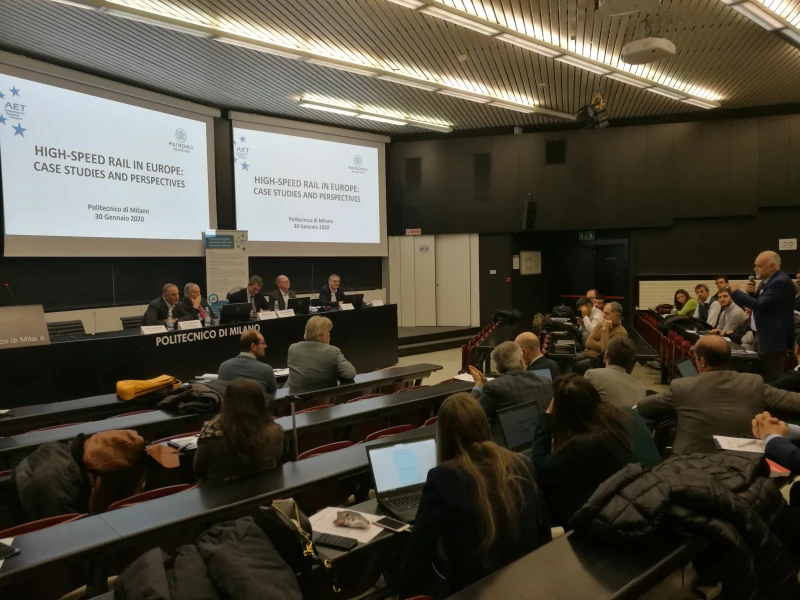-
Past ETC Papers

Browse, search and view papers from the past AET Conferences.
-
Members' Area

AET promotes networking and exchange of ideas, information and opportunities amongst members.
Conference Papers 1996
Uxbridge, United Kingdom
ETC Conference Papers 1996
Development of a comprehensive urban public transport model for long-range patronage forecasting
Seminar
Day 1 (1 Jan 1996), Transportation Planning Methods, Young Researchers Forum, 09:00 - 10:30
Status
Accepted, documents submitted
Authors
DELLE SITE P and MACKET R, University College London, UK
Short abstract
In this paper the introduction on a given urban route of a new public transport (PT) mode, which upgrades, on at least part of the route, an existing bus or rail service, is considered. PT in urban areas can be improved with measures including not only ad
Abstract
In this paper the introduction on a given urban route of a new public transport (PT) mode, which upgrades, on at least part of the route, an existing bus or rail service, is considered. PT in urban areas can be improved with measures including not only adjustment of short-range operating factors, such as frequency and fare, but also enhancement of some of the long-range factors, relating to the right-of-way (ROW) and technology. Interest in the latter is prompted by the potential of so-called intermediate modes, i.e. modes lying between conventional heavy rail and bus services (e.g. bus priority measures, guided busways, street running trams, light rail--LR).
Evidence of this relatively new trend is provided by the number of bus priority and LR schemes that have been introduced in many urban areas. New ideas for PT in outer London are covered in a report by London Transport (London Transport Planning, 1995). It is likely that decision makers will have to cope increasingly in the future with the problem of choosing between alternative PT mode options for either heavily-used bus corridors or lightly-used rail services as well as new routes, as in the cases of the study for London.
Patronage forecasting is a key issue in strategic planning as it plays a role in both financial and economic assessment and, hence, finally, in the choice between alternative PT modes. The current debate on the accuracy of patronage forecasting (Mackett, 1996), although suggesting that cases of massive overestimates---like those shown by some LR schemes in the US can be explained by the need to ensure funding, has led the authors of this paper to reconsider the problem from basic principles.
The paper reports on research work carried out with a grant by the European Commission within the Human Capital Mobility Programme, aimed at:
* first, developing a comprehensive theoretical framework for PT patronage forecasting,
* secondly, bringing it to the modelling stage.
Section 2 of the paper presents the theoretical framework, highlighting the relevant elements. The variables and the interactions are identified to illustrate the potential for the analysis of the policy and the responses to it. The PT modes are described in terms of their basic characteristics. Also the context of the policy, including the relevant exogenous elements that are independent of the policy but with an effect on patronage, is identified. The time scale of interactions is taken into account in order to cover the common length of time horizon adopted for this kind of forecasts. Section 3 addresses some modelling issues. The main components of the modelling framework are first identified. To achieve higher policy sensitivity, the problem is formulated as a restricted area model. The general hallmarks of the approach are described. The modelling of the effects of changes in transport supply brought about by the policy, all other elements affecting patronage remaining equal, is then investigated. The potential of the contribution which can be represented by current modelling practice, together with major gaps in current practice and research are discussed. The features of a simplified version that has been implemented conclude the Section. Section 4 concludes the paper, summing-up contributions provided, suggesting interesting directions of research and highlighting work needed for exploitation of the proposed approach.
Documents:

Association For
European Transport
Forester House
Doctors Lane
Henley-in-Arden
Warwickshire, UK
B95 5AW
+44 (0) 15 64 793552
VAT number: 710 1866 64
Conference Supporters & Endorsers




Legal Entity
The Association for European Transport is registered as an Association ('vereniging') with the Chamber of Commerce for Haaglanden in The Netherlands under company number 27170096.
Built on Zenario




